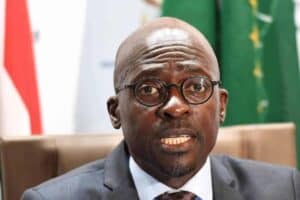Former president Jacob Zuma's penchant for regularly reshuffling Cabinet was bad enough, without even mentioning the alleged motives behind it.

South Africa’s current social and economic shambles and turmoil can be laid squarely at the door of the constant swapping of ministers, with at least 14 Cabinet reshuffles and 129 people serving as minister or deputy minister since 2009.
In a report titled Executive Chaos, author and the Institute of Race Relations (IRR) head of politics and governance Gareth van Onselen found that one of the main reasons the country was in turmoil was due to the “discontinuity in leadership”.
Since Jacob Zuma elected his first Cabinet on May 10, 2009 until October 9, 2018, a total of 164 changes have been made to the national executive. This includes the swearing in of President Cyril Ramaphosa in February this year.
One-hundred-and-twenty-nine people have served as minister or deputy minister. Fifty-seven of those were no longer part of the national executive.
The average national executive lasts 165 working days before it is reconstituted. The longest lasted 372 working days, while the shortest, Des van Rooyen, served just three working days.
“There are many reasons for the ANC’s failure to deliver over the past nine years, but one of the biggest contributing factors is undoubtedly the discontinuity in leadership, at the very top.
“Executive chaos at the top equals delivery chaos on the ground,” Van Onselen said.
And while the faces aren’t always new, there is also a tendency to simply reshuffle executives, even when some come with significant baggage.
ANC member of parliament Hlengiwe Mkhize and Home Affairs Minister Malusi Gigaba led in occupying the most positions – six and five different positions in Cabinet respectively.
But the shifting of Gigaba seemed to serve the interests of the Gupta family as there were questionable developments in each portfolio he held, political analyst Somadoda Fikeni told The Citizen.
“With Gigaba, you begin to see the effort to use him, whether he succeeded or not, in the most critical posts, such as public enterprises. When he’s there, you see an interest from the Guptas and others.
“With home affairs, you see developments such as the granting of citizenship.
“Then finance and Treasury – there have been implications for the [Public Investment Corporation] and for [the South African Revenue Service].”
“Gigaba seemed to be moved to departments which were potential targets,” Fikeni said.
According to the report, the most unstable departments were communications, which had eight ministers, finance and public service with seven and the department of energy, with six ministers since 2009.
The four most retained posts were basic education minister (Angie Motshekga), economic development minister (Ebrahim Patel), health minister (Aaron Motsoaledi) and minister of trade and industry (Rob Davies).
The basic education department boasts an unchanged minister and deputy minister in recent presidential terms.
That, however, was only because their portfolios were of little or no economic interest, and to maintain relations with Motshekga, former leader of the ANC Women’s League, Fikeni said.
“She was also supportive of the president. [He] might have been reluctant to move in that portfolio or seen to be targeting that constituency which he needed for his campaign.”
For more news your way, download The Citizen’s app for iOS and Android.






